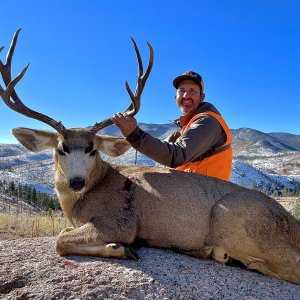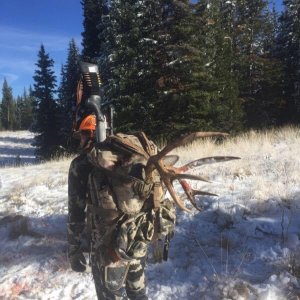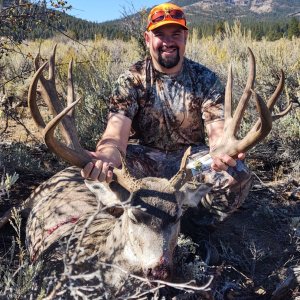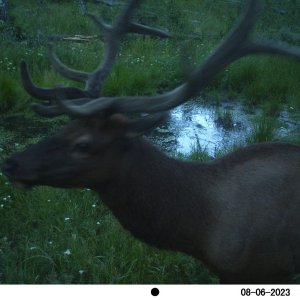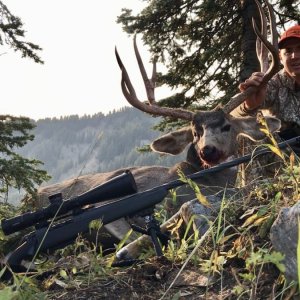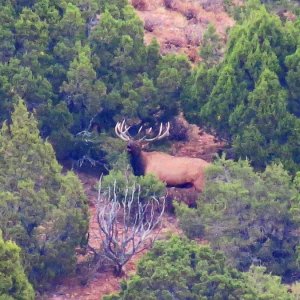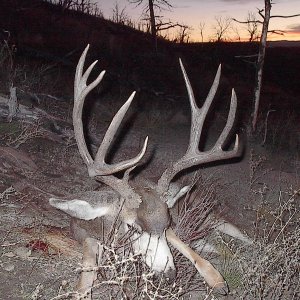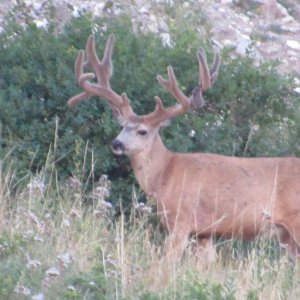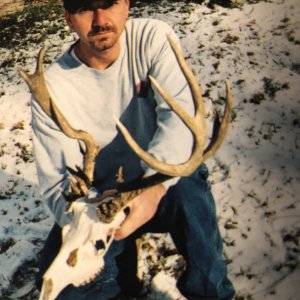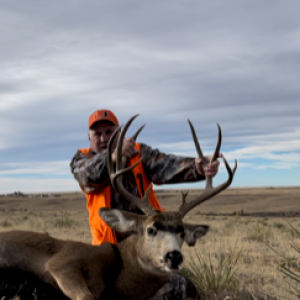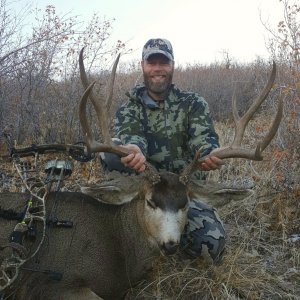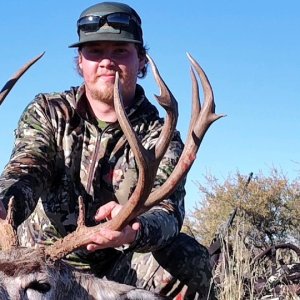D
Deersman
Guest
Per the Monroe collar study findings.
Nebo12000, You mentioned low fawn survival rates. There could be many factors contributing to the cause of that besides coyote predation. I am not saying coyotes aren't taking a toll because I firmly do. But during last August's WD meeting Mr Fenimore point blank asked Mr Bunnell if there is a mortality in the 8 collar studies in Utah does somebody go and determine the cause of death. Mr Bunnell replied no we don't have the time to determine that. So IMO placing the lions share of blame on coyotes (pun intended) is a guess at best. When causes of mortality are not definitively determined.
I'm not trying to brow beat the DWR or the biologist that are conducting these studies. Mule deer recovery is a matter that is extremely important to me as it is to everybody on this site. The findings from these studies are going to be far reaching and sway management decisions far into our future. Not only for mule deer but the species that prey upon them. Not to mention tremendous limited resources are being poured into these studies and it would be a real shame if they were flawed from the beginning.
Fawn mortality. It's my belief that there are few causes for high fawn mortality. Coyote predation being one. In the case of the Monroe a very low buck to doe ratio may be a smoking gun to fawn survival. And more importantly an extremely low number of mature buck left post hunt to do the breeding. On several occasions I have witnessed 2 pt and spike buck's trying to breed doe. I mention trying because the examples I have witnessed. The doe's simple reject advances from yearling bucks. Obviously this is getting done eventually. But the big question is when? Dec Jan Feb? I believe a good population of mature buck facilitates proper breeding timing. When a fawn is born its a race against time to prepare for the upcoming winter. So if a fawn is not born until June or even July its chances of survival are greatly diminished. The other factor may be Elk/Deer competition on winter and fawning grounds. Another cause may be malnutrition in mothering doe's. Due to habitat loss as mentioned in the RAC request thread. And malnutrition could be increased from simple predator presence on winter range. Many of these factors aren't apparent in habitat that is of top quality to mule deer. But in the case of Monroe's deer habitat degradation these effect may be magnified.
Buck doe ratio's. Monroe has the unenviable distinction of the unit with the lowest buck doe ratio in Utah. Off the top of my head I believe the DWR figures it at 8-10 bucks per 100 doe. I may be wrong. There must be a canyon with a whole lot of bucks because I would put it a bit lower than that. The obvious factor to this low B/D ratio is hunter harvest. But if one crunches the numbers and extrapolates figures. The current and historic reported harvest to explain where all the bucks are going. It doesn't account for even a third of the bucks potentially born on Monroe annually. So where are all the bucks going? I'm sure Roadkill and poaching can account for some and even unreported harvest. But still a majority of buck loss is unaccounted for. This is where cougar enter the radar for me. Estimates put the Monroe cougar population somewhere around 40 cats. That's up to 2000 deer per yr taken by lions. Studies have shown cougar will target solitary buck deer. And mature bucks the most solitary of all. I contend a vast majority of the mature bucks on Monroe are being taken by lions not by hunters.
So yes option 2 will mitigate some of our problems in concerns to B/D ratios. But regardless of how much you limit hunter harvest if we deem cougar to not be a factor in our mule deer problems. I think we are missing the boat. There lies my major concern with the collar studies being conducted in Utah.
I would like to also point out that the habitat loss for deer on Monroe. Is primarily caused by habitat restoration efforts. As mentioned in another thread it takes time for these projects to pay off. And I pray that's true for my kids sake. But its been over 10 yrs on some of these and we have yet to see any improvement in browse from when the project was completed. Let alone improvement from pre treated habitat.
Nebo12000, You mentioned low fawn survival rates. There could be many factors contributing to the cause of that besides coyote predation. I am not saying coyotes aren't taking a toll because I firmly do. But during last August's WD meeting Mr Fenimore point blank asked Mr Bunnell if there is a mortality in the 8 collar studies in Utah does somebody go and determine the cause of death. Mr Bunnell replied no we don't have the time to determine that. So IMO placing the lions share of blame on coyotes (pun intended) is a guess at best. When causes of mortality are not definitively determined.
I'm not trying to brow beat the DWR or the biologist that are conducting these studies. Mule deer recovery is a matter that is extremely important to me as it is to everybody on this site. The findings from these studies are going to be far reaching and sway management decisions far into our future. Not only for mule deer but the species that prey upon them. Not to mention tremendous limited resources are being poured into these studies and it would be a real shame if they were flawed from the beginning.
Fawn mortality. It's my belief that there are few causes for high fawn mortality. Coyote predation being one. In the case of the Monroe a very low buck to doe ratio may be a smoking gun to fawn survival. And more importantly an extremely low number of mature buck left post hunt to do the breeding. On several occasions I have witnessed 2 pt and spike buck's trying to breed doe. I mention trying because the examples I have witnessed. The doe's simple reject advances from yearling bucks. Obviously this is getting done eventually. But the big question is when? Dec Jan Feb? I believe a good population of mature buck facilitates proper breeding timing. When a fawn is born its a race against time to prepare for the upcoming winter. So if a fawn is not born until June or even July its chances of survival are greatly diminished. The other factor may be Elk/Deer competition on winter and fawning grounds. Another cause may be malnutrition in mothering doe's. Due to habitat loss as mentioned in the RAC request thread. And malnutrition could be increased from simple predator presence on winter range. Many of these factors aren't apparent in habitat that is of top quality to mule deer. But in the case of Monroe's deer habitat degradation these effect may be magnified.
Buck doe ratio's. Monroe has the unenviable distinction of the unit with the lowest buck doe ratio in Utah. Off the top of my head I believe the DWR figures it at 8-10 bucks per 100 doe. I may be wrong. There must be a canyon with a whole lot of bucks because I would put it a bit lower than that. The obvious factor to this low B/D ratio is hunter harvest. But if one crunches the numbers and extrapolates figures. The current and historic reported harvest to explain where all the bucks are going. It doesn't account for even a third of the bucks potentially born on Monroe annually. So where are all the bucks going? I'm sure Roadkill and poaching can account for some and even unreported harvest. But still a majority of buck loss is unaccounted for. This is where cougar enter the radar for me. Estimates put the Monroe cougar population somewhere around 40 cats. That's up to 2000 deer per yr taken by lions. Studies have shown cougar will target solitary buck deer. And mature bucks the most solitary of all. I contend a vast majority of the mature bucks on Monroe are being taken by lions not by hunters.
So yes option 2 will mitigate some of our problems in concerns to B/D ratios. But regardless of how much you limit hunter harvest if we deem cougar to not be a factor in our mule deer problems. I think we are missing the boat. There lies my major concern with the collar studies being conducted in Utah.
I would like to also point out that the habitat loss for deer on Monroe. Is primarily caused by habitat restoration efforts. As mentioned in another thread it takes time for these projects to pay off. And I pray that's true for my kids sake. But its been over 10 yrs on some of these and we have yet to see any improvement in browse from when the project was completed. Let alone improvement from pre treated habitat.

